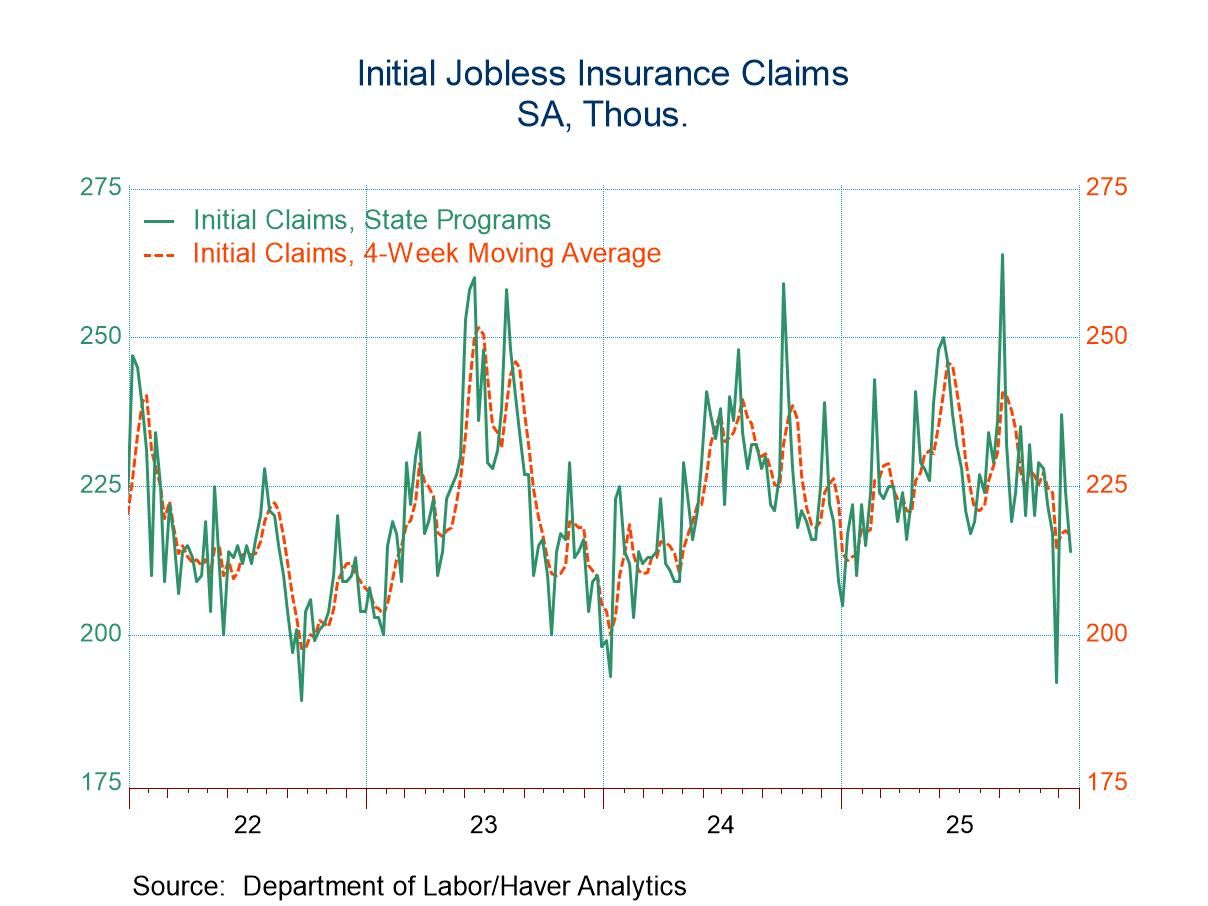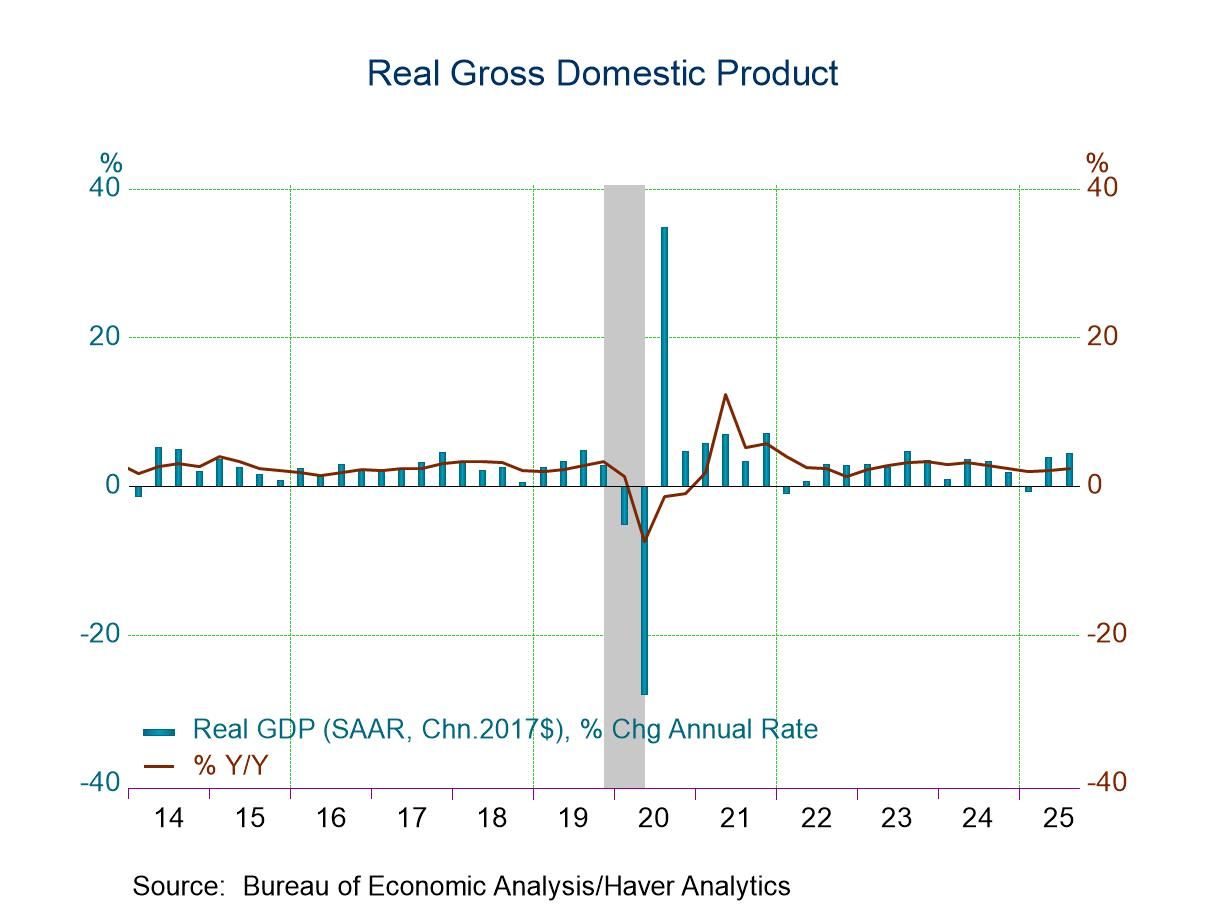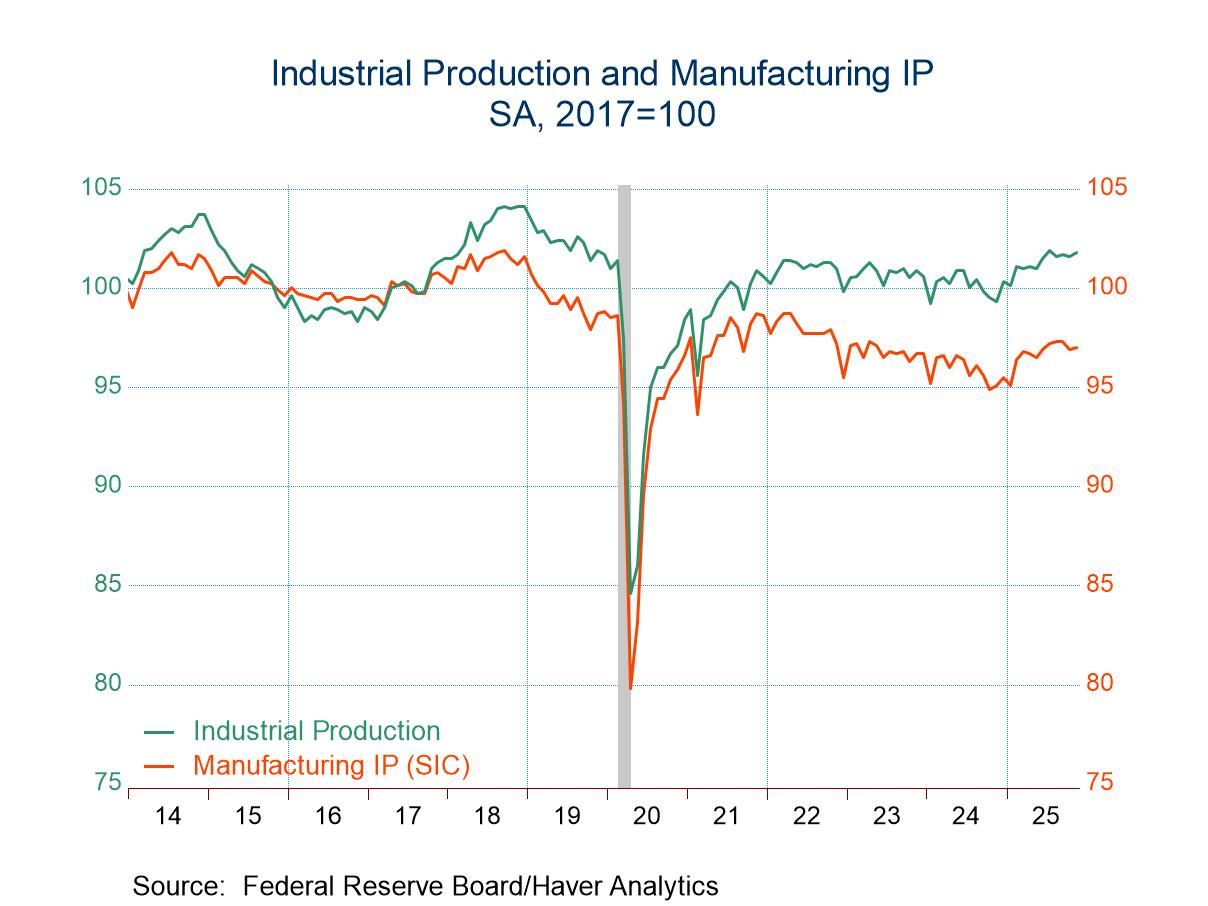Retail Sales Volumes Recover but Expectations Lag

Retail sales in January rose 3.9% after falling 3.7% in December and rising in November. The sequential pattern of nominal growth rates shows a pickup from 3.8% over 12-months to 4.4% over 6-months to 4.9% over 3-months.
During a period when inflation has been on the move changes in nominal retail sales are not the best indicator of what's going on with sales volumes. However, real retail sales (sales volumes) in the UK show a pickup with real sales volumes up 0.7% over 12-months, at a 1.7% annual rate over six-months, and surging at a 5.9% annual rate over three-months. Retail sales volumes show real sales in January rose by 3.4% after falling 3.3% in December and rising in November- the same general pattern as for nominal sales.
Passenger car registrations have fallen for three months in a row, and they show gathering weakness. Registrations are up by 7.5% over 12-months but they're falling at a 4.7% annual rate over six-months, and at a 17.1% annual rate over three-months. This is an important category for retail spending; automobile registrations are weakening and weakening more seriously.
Surveys on retail sales are mixed in their message. The Confederation of British Industry (CBI) looks at retail sales for the time of year and finds conditions worsening in recent months with a change in assessment of -6 in November turning to -9 in December and to -22 in January. That same CBI survey shows a reading change of -44 over 12 months -46 over 6-months and -37 over 3-months. All of these are net negative numbers and are simple changes unadjusted for the length of the time span. It is consistent deterioration.
The CBI survey also offers a survey on the volume of orders looking at year-over-year changes. The year-over-year pattern monthly is irregular with a + 15 in November a - 32 in December and a + 18 in January. Over 12 months CBI order volumes year-over-year register a drop of -4 over 6-months, an increase of +3, and over three-months a change of plus one. The plus one reading shows erosion in upward momentum compared to +3 over 6 months but it's still a positive reading.
The GFK reading on consumer confidence is a +3 in January from +2 in December, but both of those gains are lower than the +6 reading for November. Sequentially consumer confidence has slowed its gains slightly with a +26 reading over 12-months compared to readings of +11 over 6 months. The +11 ga over three months would be quite strong if it kept up for 12-months; then it would trump the +26 gain, logged over 12-months.
The table also chronicles the growth rate for the CPIH. There we see that the inflation rate for 12 months six months to three months has gradually been coming down, which is a good development.
Quarter to date (QTD) statistics are relatively ephemeral at this stage since we're looking only at January compared to the fourth quarter average. On that basis nominal sales are up strongly at a 10.4% annual rate, real sales are up at a 9.9% annual rate, passenger car registrations are falling at a nearly 20% annual rate. The survey data from the CBI shows retail sales for the time of year weaker with a -30 drop, although the volume of orders is higher and GfK consumer confidence improves.
The far-right hand column evaluates the growth of the Year-over-year percentage changes for ordinary retail sales data versus ranking on the index levels for the surveys. These show a middling 55.6 percentile standing for sales growth, although for the volume of sales, conditions appear much weaker with the real sales increase at only a 33-percentile standing in the bottom 1/3 of its historic range of values. The pace for passenger car registrations the year-over-year reading still has a nearly 72-percentile standing, but shorter terms growth rates show that is being undercut. The CBI assessment of sales for time of year is a very weak 1.6 percentile standing, the volume of orders year over year has an 8.6 percentile standing, and consumer confidence reading has a 35-percentile standing. All the surveys show weak conditions. These are conditions that are very weak in comparison with historic norms.
Summing up UK economy has been struggling. The recent GDP figure showed the 2nd decline in a row for real GDP conditions in the retail sector. Retail sales are somewhat mixed with current spending holding up better than expected but the more forward-looking gauges from the CBI and the relative position of consumer confidence would indicate caution in interpreting those events. Retail sales have had a pickup recently, but year-over-year growth is still modest and survey data on merchant plans is weak...

Robert Brusca
AuthorMore in Author Profile »Robert A. Brusca is Chief Economist of Fact and Opinion Economics, a consulting firm he founded in Manhattan. He has been an economist on Wall Street for over 25 years. He has visited central banking and large institutional clients in over 30 countries in his career as an economist. Mr. Brusca was a Divisional Research Chief at the Federal Reserve Bank of NY (Chief of the International Financial markets Division), a Fed Watcher at Irving Trust and Chief Economist at Nikko Securities International. He is widely quoted and appears in various media. Mr. Brusca holds an MA and Ph.D. in economics from Michigan State University and a BA in Economics from the University of Michigan. His research pursues his strong interests in non aligned policy economics as well as international economics. FAO Economics’ research targets investors to assist them in making better investment decisions in stocks, bonds and in a variety of international assets. The company does not manage money and has no conflicts in giving economic advice.






